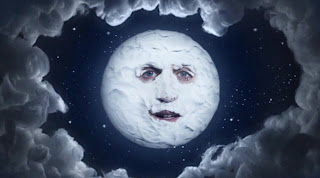The week I am most intrigued about is week 3; as this one is explained to be regarding the blurring of boundaries in design, and that all disciplines bleed and incorporate one another in to forming an output. I personally like working with mixed media projects- so maybe this week would uncovered other influential artist who practice similar methods. Alongside maybe suggesting when and who started experimenting with using more than one discipline on one piece. This arguably has a sociological link as Spencer mentioned grand claims and monopolies in which certain design elements used to hold above and over others.
We also started on week one in the second half of the lecture with a very brief explanation of a possible history of animation. Spencer explained that animation history was a lot less clear cut than a graphic design one- as there are conflicting opinions on what was the 1st animation with "is there a narrative" being a key factor in to whether this can be considered an animation if it doesn't tell a clear story. An example of this is Emilie Cohl with Fantasmagorie in 1908. This is often considered the first animation as it displayed morphing and moving characters, but this is arguably not the case. The narrative is impossible to follow and feels disjointed, with it just appearing nonsense to the general viewing audience.
We then viewed an animation by Tim Hope, this too expressed a strange, incohesive storyline. "The wolf man" was a simple series of cartoon drawings mapped out in 3d studios for a playstation animation. The animation element doesn't appear as basic as the overall output portrays- the sound effects and voice over lessen the quality of the piece I believe. The visuals are distracted from by the stage sound effects and immature songs within.
However on further investigation of this piece, I uncovered that Tim Hope also did work for MightyBoosh. With this being a tv program I was familiar with it gave some clarity as to why bizarre outputs are often wanted. This Tv show is recognised and enjoyed for it's 'strange' factor- so visuals must also fit this requirement.
An animation piece with a clearer narrative is "prometheus" By Bruce Brickton. This uses sculpture and morphology to create a clear narrative. It melds and molds the ever-changing scenes and story by the sculptures manipulation in to the next.
Sculpture is a key source of character formation and movement in many more recognisable feature length animation films.
e.g. Shrek, Toystory and Wallace and Gromit. It gives characters a 3d dimension even if they will be digitally manipulated to form the rest of the majority of the film.
With the example of Toystory, we were showed a piece of work Pixar had developed using zoetrope technology to form an animation.
(Rotoscope- Max Fleischer 1915)
(zeotrope)
While this appeared very visually fascinating and looked a clear animation on screen- we were told of all the post production treatment this would have had to go through in order for the edit to remove the flickering and strobe effect this type of animation type would produce. This edit was essential before audience consumption.
These above examples however prove how animation as an art form can now be linked and be considered a profitable enterprise. This has come a long way from the experimentational more basic animations such as Dip Dap (with stable objects and minor scene changes) and Stuart Blacktons laughing sketched characters.




